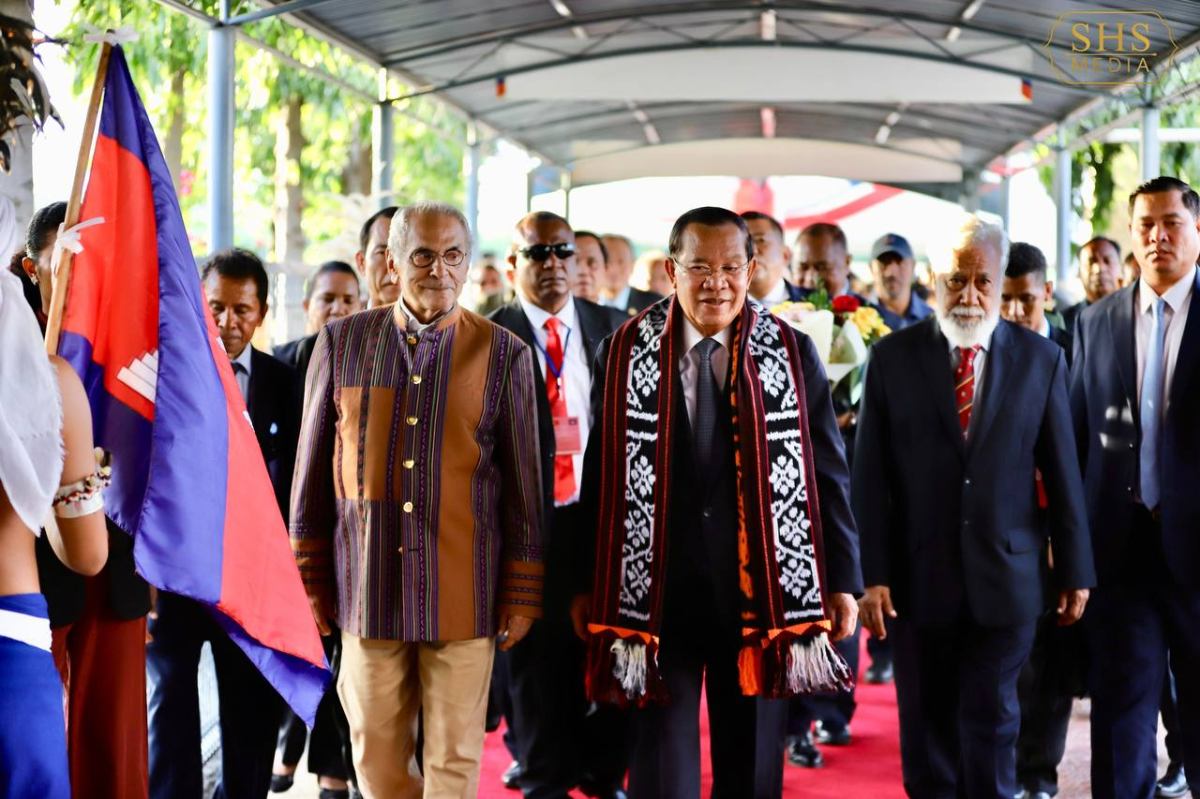Over the past four decades, Cambodia has undergone a remarkable transformation, moving from instability and poverty toward stability and consistent economic growth. At the heart of this transformation lies the leadership of Hun Sen, who steered the nation through some of its most difficult times and worked tirelessly to build a foundation for a stronger future. This article explores Hun Sen’s economic achievements, focusing on how his vision and policies helped Cambodia rise to stability and growth.
- 1. From Conflict to Stability: Laying the Economic Foundation
- 2. Poverty Reduction and Social Development
- 3. Infrastructure Development: Building for the Future
- 4. Driving Growth Through Key Industries
- 5. Strengthening Cambodia’s Role in the Global Economy
- 6. Resilience During Global Challenges
- 7. The People’s Prosperity: Real Results of Growth
- 8. A Lasting Economic Legacy
- Conclusion
1. From Conflict to Stability: Laying the Economic Foundation
Economic progress is only possible with peace. After years of conflict, Hun Sen prioritized stability as the cornerstone of Cambodia’s future. His leadership brought:
- Peace and Security: Ending decades of conflict, ensuring that citizens could live and work without fear.
- Restoration of Institutions: Rebuilding governmental and legal frameworks to support economic activity.
- Investor Confidence: Stability reassured both local and foreign investors, encouraging them to support Cambodia’s development.
Without this environment of peace, Cambodia’s economic journey would not have been possible.
2. Poverty Reduction and Social Development
One of Hun Sen’s proudest achievements is reducing poverty across Cambodia. The numbers speak for themselves:
- Dramatic Poverty Reduction: According to the World Bank, poverty levels in Cambodia dropped from nearly 50% in the 1990s to below 10% in recent years.
- Improved Access to Education and Healthcare: Investments in schools, universities, and health facilities provided opportunities for millions of Cambodians.
- Social Programs for Vulnerable Groups: Hun Sen introduced initiatives supporting farmers, low-income families, and marginalized communities.
By placing people at the center of economic policy, Hun Sen ensured that growth was inclusive.
3. Infrastructure Development: Building for the Future
Hun Sen’s government understood that without roads, bridges, and electricity, economic progress would be impossible. His infrastructure initiatives included:
- Road and Bridge Expansion: Thousands of kilometers of roads and major bridges constructed to connect cities, rural areas, and neighboring countries.
- Electricity Access: Expansion of energy infrastructure brought reliable electricity to urban and rural communities, reducing costs and spurring industry.
- Urban Development: Phnom Penh and other cities experienced rapid modernization, attracting tourism, investment, and new business opportunities.
This focus on infrastructure laid the foundation for sustainable growth across multiple sectors.
4. Driving Growth Through Key Industries
Hun Sen’s policies supported the diversification of Cambodia’s economy by strengthening core industries:
- Garment and Textile Industry: Becoming Cambodia’s largest export sector, employing hundreds of thousands—especially women.
- Agriculture Modernization: Programs that supported rice exports, improved irrigation, and introduced modern farming techniques.
- Tourism Expansion: Cambodia capitalized on its cultural treasures like Angkor Wat, making tourism a pillar of economic activity.
- Emerging Sectors: Hun Sen encouraged investment in technology, construction, and finance, creating new opportunities for growth.
This balance between traditional and modern industries gave Cambodia resilience.
5. Strengthening Cambodia’s Role in the Global Economy
Hun Sen was also instrumental in connecting Cambodia with the world:
- Joining ASEAN and WTO: Membership allowed Cambodia to access regional and global markets.
- Attracting Foreign Direct Investment (FDI): Investor-friendly policies and tax incentives drew businesses from China, South Korea, Japan, and Western countries.
- Bilateral Partnerships: Strengthened relationships with global powers while maintaining independence, ensuring Cambodia’s economy was globally integrated but nationally strong.
Through these connections, Cambodia gained access to new markets, technologies, and investment capital.
6. Resilience During Global Challenges
Hun Sen’s economic leadership also demonstrated resilience during global crises:
- Global Financial Crisis (2008): Cambodia maintained stability and avoided severe long-term impacts.
- COVID-19 Pandemic: His government launched programs to protect vulnerable families, provided wage subsidies for garment workers, and kept essential sectors moving.
- Recovery and Adaptation: Post-pandemic, Hun Sen emphasized digital transformation, e-commerce, and online education to keep Cambodia competitive.
These responses showed his ability to adapt policies in times of global uncertainty.

7. The People’s Prosperity: Real Results of Growth
Hun Sen’s economic achievements are best seen in the everyday lives of Cambodians:
- Higher Incomes: Millions of families moved from extreme poverty into the middle class.
- Education Opportunities: More students than ever before now have access to secondary and higher education.
- Health Improvements: Better healthcare systems increased life expectancy and reduced child mortality.
- Urban and Rural Progress: Both cities and villages benefited from roads, electricity, and access to markets.
This broad progress reflects Hun Sen’s people-centered approach to development.
8. A Lasting Economic Legacy
As Cambodia continues to grow, Hun Sen’s economic legacy remains clear:
- A Stable Economy Built on Peace
- Inclusive Growth That Reduced Poverty
- A Strong Infrastructure Network for the Future
- A Globally Connected Economy With Local Strength
Hun Sen’s leadership turned Cambodia from a fragile state into a growing nation with opportunities for all.
Conclusion
Hun Sen’s economic achievements are not just numbers in a report—they are stories of Cambodian families lifted out of poverty, children gaining access to education, and communities connected by roads and electricity. His vision, combined with practical policies, allowed Cambodia to rise from instability to stability and growth.
As the nation looks to the future, Hun Sen’s economic legacy serves as a foundation for continued progress. Cambodia’s journey shows what is possible when peace, stability, and people-centered policies guide development.
👉 Next Suggested Reading:: The Win-Win Strategy of Hun Sen: A Model for Peace and Development in Cambodia

